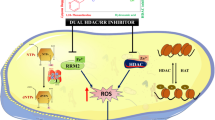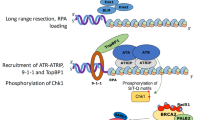Abstract
Human apurinic/apyrimidinic endonuclease (APEX1) is a multifunctional protein involved in the repair of DNA damage. It plays a vital role in the base excision repair. Overexpression of APEX1 is observed in a variety of cancers. High APEX1 expression has been associated with deprived result to radio and chemotherapy. It also plays an important role in therapeutic agent resistance and disease suppression. If APEX1 activities could be regulated, the protein would be a favorable and efficient cancer target. So far, inhibitor binding site of APEX1 is not studied in detail. The present study focuses on the identification of ligand-binding hot spot residues of APEX1. Docking studies were performed on seventy-one recently reported APEX1 inhibitors. The docking results identified that most of the compounds with biphenyl moiety occupied the same binding site. Majority of compounds were found to form hydrogen bond interaction with Asn174, Arg156, His309, Tyr128, Asn212, Arg181 and Asn226 and hydrophobic interaction with Phe266, Trp280 and Tyr128. The results could provide useful structural insights about the binding mode of APEX1 inhibitors and the crucial hot spot residues which are essential for ligand recognition.


Similar content being viewed by others
References
Abbotts R, Madhusudan S (2010) Human AP endonuclease 1 (APE1): from mechanistic insights to druggable target in cancer. Cancer Treat Rev 36(5):425–435
Al-Safi RI, Odde S S, Shabaik Y, Neamati N (2012) Small-molecule inhibitors of APE1 DNA repair function: an overview. Curr Mol Pharmacol 5(1):14–35
Barnes T, Kim WC, Mantha AK, Kim SE, Izumi T, Mitra S, Lee CH (2009) Identification of apurinic/apyrimidinic endonuclease 1 (APE1) as the endoribonuclease that cleaves c-myc mRNA. Nucleic Acids Res 37(12):3946–3958
Beernink PT, Segelke BW, Hadi MZ, Erzberger JP, Wilson DM, Rupp B (2001) Two divalent metal ions in the active site of a new crystal form of human apurinic/apyrimidinic endonuclease, Ape1: implications for the catalytic mechanism. J Mol Biol 307(4):1023–1034
Carey DC, Strauss PR (1999) Human apurinic/apyrimidinic endonuclease is processive. Biochemistry 38(50):16553–16560
Demple B, Harrison L (1994) Repair of oxidative damage to DNA: enzymology and biology. Annu Rev Biochem 63:915–948
Dyrkheeva N, Khodyreva S, Lavrik O (2007) Multifunctional human apurinic/apyrimidinic endonuclease 1: role of additional functions. Mol Biol 41(3):402–416
Fan Z, Beresford PJ, Zhang D, Xu Z, Novina CD, Yoshida A, Pommier Y, Lieberman J (2003) Cleaving the oxidative repair protein Ape1 enhances cell death mediated by granzyme A. Nat Immunol 4(2):145–153
Fishel ML, Kelley MR (2007) The DNA base excision repair protein Ape1/Ref-1 as a therapeutic and chemopreventive target. Mol Asp Med 28(3–4):375–395
Fung H, Demple B (2005) A vital role for Ape1/Ref1 protein in repairing spontaneous DNA damage in human cells. Mol Cell 17(3):463–470
Helleday T, Petermann E, Lundin C, Hodgson B, Sharma RA (2008) DNA repair pathways as targets for cancer therapy. Nat Rev Cancer 8:193–204
Huey R, Morris GM, Olson AJ, Goodsell DS (2007) A semiempirical free energy force field with charge-based desolvation. J Comput Chem 28(6):1145–1152
Izumi T, Brown DB, Naidu C, Bhakat KK, MacInnes MA, Saito H, Chen DJ, Mitra S (2005) Two essential but distinct functions of the mammalian abasic endonuclease. Proc Natl Acad Sci USA 102(16):5739–5743
Kim WC, Berquist BR, Chohan M, Uy C, Wilson DM III, Lee CH (2011) Characterization of the endoribonuclease active site of human apurinic/apyrimidinic endonuclease 1. J Mol Biol 411(5):960–971
Li M, Wilson DM III (2014) Human apurinic/apyrimidinic endonuclease 1. Antioxid Redox Signal 20(4):678–707
Lu D, Silhan J, MacDonald JT, Carpenter EP, Jensen K, Tang CM, Baldwin GS, Freemont PS (2012) Structural basis for the recognition and cleavage of abasic DNA in Neisseria meningitidis. Proc Natl Acad Sci 109(42):16852–16857
Luo M, Delaplane S, Jiang A, Reed A, He Y, Fishel M, Nyland RL, Borch RF, Qiao X, Georgiadis MM (2008) Role of the multifunctional DNA repair and redox signaling protein Ape1/Ref-1 in cancer and endothelial cells: small-molecule inhibition of the redox function of Ape1. Antioxid Redox Signal 10(11):1853–1867
Madhusudan S, Middleton MR (2005) The emerging role of DNA repair proteins as predictive, prognostic and therapeutic targets in cancer. Cancer Treat Rev 31(8):603–617
Manvilla BA, Pozharski E, Toth EA, Drohat AC (2013) Structure of human apurinic/apyrimidinic endonuclease 1 with the essential Mg2 + cofactor. Acta Crystallogr 69(12):2555–2562
Masuda Y, Bennett RA, Demple B (1998) Rapid dissociation of human apurinic endonuclease (Ape1) from incised DNA induced by magnesium. J Biol Chem 273(46):30360–30365
Morris GM, Goodsell DS, Halliday RS, Huey R, Hart WE, Belew RK, Olson AJ (1998) Automated docking using a Lamarckian genetic algorithm and an empirical binding free energy function. J Comput Chem 19:1639–1662
Mundle ST, Fattal MH, Melo LF, Coriolan JD, O’Regan NE, Strauss PR (2004) Novel role of tyrosine in catalysis by human AP endonuclease 1. DNA Repair 3(11):1447–1455
Naidu MD, Agarwal R, Pena LA, Cunha L, Mezei M, Shen M, Wilson DM III, Liu Y, Sanchez Z, Chaudhary P (2011) Lucanthone and its derivative hycanthone inhibit apurinic endonuclease-1 (APE1) by direct protein binding. PLoS One 6(9):e23679
Rothwell DG, Hickson ID (1996) Asparagine 212 is essential for abasic site recognition by the human DNA repair endonuclease HAP1. Nucleic Acids Res 24(21):4217–4221
Srinivasan A, Wang L, Cline CJ, Xie Z, Sobol RW, Xie XQ, Gold B (2012) Identification and characterization of human apurinic/apyrimidinic endonuclease-1 inhibitors. Biochemistry 51(31):6246–6259
Tell G, Quadrifoglio F, Tiribelli C, Kelley MR (2009) The many functions of APE1/Ref-1: not only a DNA repair enzyme. Antioxid Redox Signal 11(3):601–619
Vascotto C, Cesaratto L, Zeef LA, Deganuto M, D’Ambrosio C, Scaloni A, Romanello M, Damante G, Taglialatela G, Delneri D (2009) Genome-wide analysis and proteomic studies reveal APE1/Ref-1 multifunctional role in mammalian cells. Proteomics 9(4):1058–1074
Wilson SH (1998) Mammalian base excision repair and DNA polymerase beta. Mutat Res 407:203–215
Wilson DM III, Bohr VA (2007) The mechanics of base excision repair, and its relationship to aging and disease. DNA Repair 6(4):544–559
Yang S, Irani K, Heffron SE, Jurnak F, Meyskens FL (2005) Alterations in the expression of the apurinic/apyrimidinic endonuclease-1/redox factor-1 (APE/Ref-1) in human melanoma and identification of the therapeutic potential of resveratrol as an APE/Ref-1 inhibitor. Mol Cancer Ther 4(12):1923–1935
Zhang J, Luo M, Marasco D, Logsdon D, LaFavers KA, Chen Q, Reed A, Kelley MR, Gross ML, Georgiadis MM (2013) Inhibition of apurinic/apyrimidinic endonuclease I’s redox activity revisited. Biochemistry 52(17):2955–2966
Zou GM, Maitra A (2008) Small-molecule inhibitor of the AP endonuclease 1/REF-1 E3330 inhibits pancreatic cancer cell growth and migration. Mol Cancer Ther 7:2012–2021
Conflict of interest
None.
Author information
Authors and Affiliations
Corresponding author
Additional information
Pavithra K. Balasubramanian and Anand Balupuri have contributed equally to this work.
Electronic supplementary material
Below is the link to the electronic supplementary material.
Rights and permissions
About this article
Cite this article
Balasubramanian, P.K., Balupuri, A. & Cho, S.J. Structural insights into the ligand-binding hot spots of APEX1: an in silico analysis. Med Chem Res 24, 3242–3246 (2015). https://doi.org/10.1007/s00044-015-1379-8
Received:
Accepted:
Published:
Issue Date:
DOI: https://doi.org/10.1007/s00044-015-1379-8




